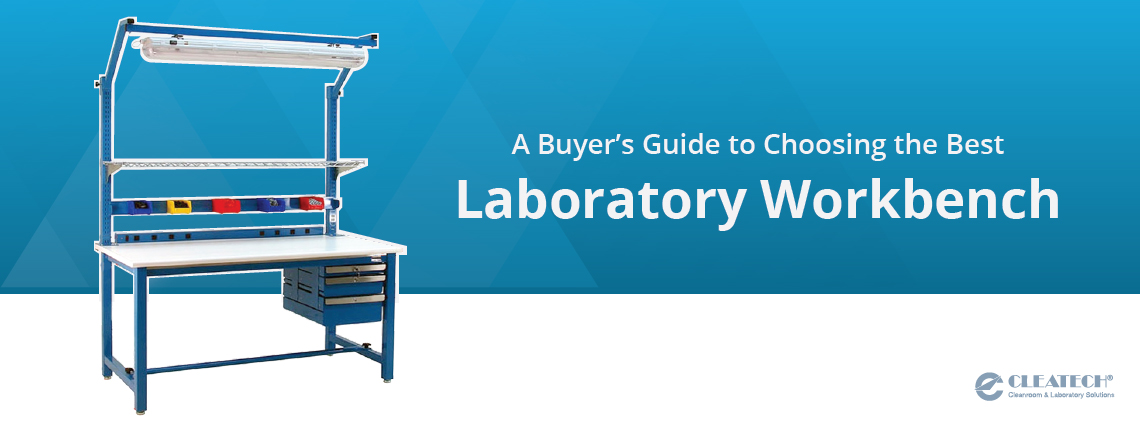A Buyer’s Guide to Choosing the Best Laboratory Workbench
A good workbench provides a safe, sturdy, and efficient workspace. While all worktables provide a surface, some are better suited for particular laboratory and cleanroom tasks than others. A few questions you should be asking yourself before purchasing a workbench: Where will it fit in my lab? How much do I want to spend? What am I going to be doing on it?
The questions above are just a few factors to consider while searching for the perfect workbench. If you plan on purchasing a workbench for a clean room, much of your decision will need to be made according to your cleanroom classification.
This buying guide will provide you with a few factors to consider when shopping for a new laboratory or cleanroom workbench.
Workbench Countertop Material

The top of the workbench is where most of your tasks will be taking place. There is a wide range of choices when comparing workbench tops. There are five top materials we will cover in this article.
ESD Laminate
Electro Static Dissipative (ESD) laminate uses a unique conductive layer to diffuse static electricity from your work surface to protect electronics and other static-sensitive devices from electric charges. Ideal for the semiconductor manufacturing industry.
Formica® Brand Laminate
Formica® Brand Laminate is a durable, wear & impact resistant material. Formica can be used in a variety of industries.
Phenolic Resin
Similar to epoxy resin countertops, Phenolic Resin countertops are lightweight, durable, resistant to most bacteria and fungus, and highly chemical resistant at a fraction of the price. These countertops are perfect for laboratories with continuous heat exposure up to 350°F (176°C).
Stainless Steel
Stainless Steel countertops are one of the easiest surfaces to maintain and aesthetically pleasing. Stainless steel is resistant to rust, corrosion, heat and is nonporous. Available in various grades, these countertops are commonly used in residential, industrial kitchens, laboratories and cleanroom, and manufacturing industries.
Butcher Block
Butcher Block Countertops are durable, easy to maintain, and best of all an affordable material. Butcher block is made from straight cuts of wood glued together into thick slabs. It stunning grain provides a premium look and feel. Its surface is soft and easy on glassware. Unlike laminate countertops, butcher blocks can be lightly sanded and reoiled when nicked or burned.
Workbench Size
An important factor to consider is the size of your workbench. Most workbenches range from 24 inches to 36 inches wide, 30 inches to 120 inches deep and 30 inches to 36 inches tall. Available space in your laboratory or cleanroom will dictate the bench size.
Mobile or Stationary
If your laboratory design is always evolving, a mobile work table may be the best for your environment. Heavy-duty locking casters, allows you to easily maneuver your work table around the laboratory and lock the table in place once its final resting spot has been selected. But, if your lab’s design is not changing anytime soon, a stationary workbench might be ideal.
Accessories & Customization
Once you have decided on the perfect workbench for your laboratory or cleanroom, it is time to add accessories. Add-ons can help keep your workspace clean, organized and optimize your workflow. Some of the common accessories to add to a workbench are LED overhead lights, power plug and cords, adjustable top shelving, electric hydraulic system and much more.
No piece of equipment in a laboratory receives more use than the workbench. The idea of buying a workbench might seem simple, but the right workstation requires some research in order to comply with your environment. We hope this article can help you in purchasing the best workbench for your laboratory or cleanroom environment.

